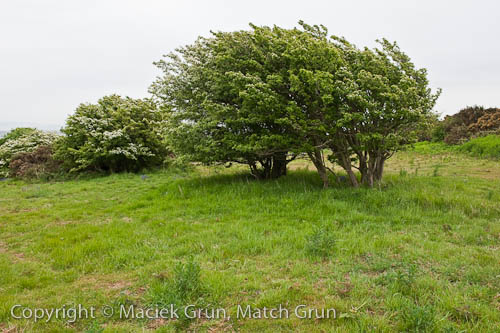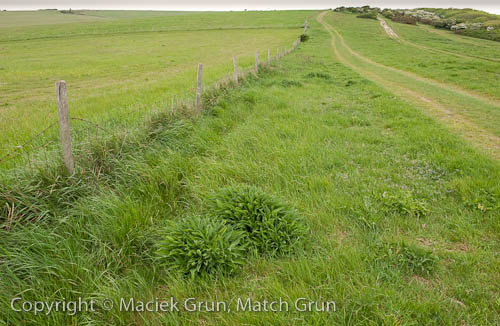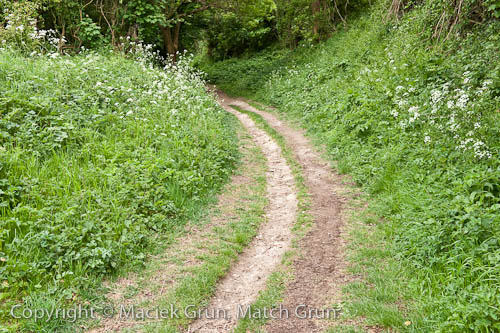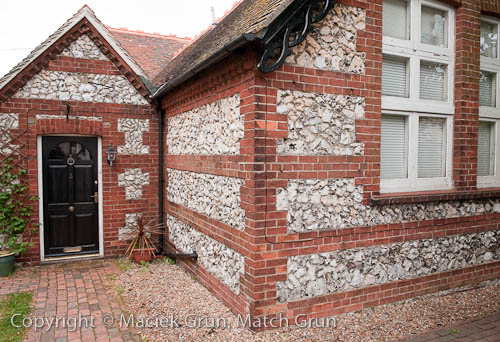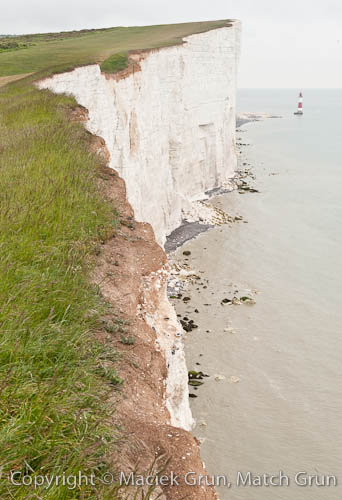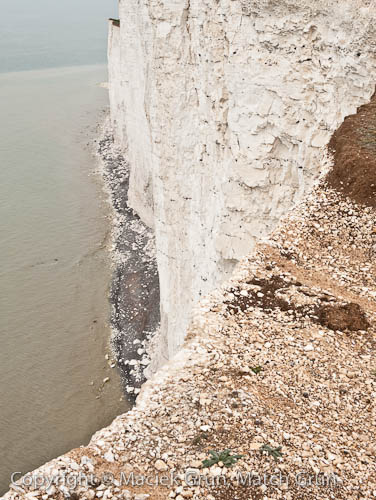Last week we were in England for a family reunion. After arriving in London, Angela and I took the train to Eastbourne, where we met our daughter Susan. Susan had made her way from Brussels by ferry from Dunkerque to Dover. During the visit, our accommodations were mainly youth hostels. After checking in at the hostel, we took a walk along the foot path that began at the hostel. This path climbed up through a lightly wooded area to the South Downs.
The Downs are characteristic of the rolling hills of Sussex and are sparsely populated with trees. Emerging from the wooded area, we came across these windblown trees. Being close to the ocean, the wind has left its mark on these trees.
Looking inland, these tracks follow the fence and lead over the hill and across the rolling hills under overcast skies.
Soon we had to return to get supplies. We return along this path that leads down through the wooded area back to the hostel.
We stopped at one of the local pubs for dinner. After parking the car in narrow streets, we passed this house to get to the pub. Many of the older houses in the southeast and southern parts of England are constructed from flint. Here is an example of one using brick and flint.
We ended the day by having dinner and picking up supplies from the local supermarket in preparation for our the trip across the south coast.
The next morning we were greeted by rain under overcast skies. After breakfast and packing the car, we stopped at Beachy Head, where one can look out over the white cliffs and the English Channel. There is drop of several hundred feet in places to the rocks below. The Beachy Head Lighthouse is a well known feature of this coast.
The chalk cliffs were originally formed by the accumulation of calcite from micro-organisms. The flint that is common to the region, is trapped in the chalk. Here is a closer view of the cliffs, where the black stones are most probably flint entrapped by the chalk.
The Beachy Head Lighthouse is not the original lighthouse that was built in this location. The original lighthouse was built at the top of the cliff illustrated above. Due to the stability of the cliffs, remains of the original light house were recently moved back from the cliffs. The original lighthouse has been incorporated into a private residence.
The day we were here (May 29) marked the 70th anniversary of the Evacuation of Dunkirk. Several thousand British soldiers were evacuated from the beaches of Dunkirk (Dunkerque) starting on this date during World War 2.
After our stop here, we made our way to Dorset under overcast skies.

